Roofing Services in Barking and Dagenham protect your property’s value and safety by preventing leaks, moisture ingress, and avoidable energy loss. Trusted throughout London and the Home Counties—including Kent, Surrey, West Sussex, and Berkshire—our specialists ensure every roofing project is delivered with compliance, care, and performance that lasts.
With decades of hands-on experience, accreditations from Which Trusted Trader and CITB, and partnerships with leading suppliers such as Welsh Slate, ALM Lead, and Kemper, you can rely on our work. Book a free survey today and protect your property.

Ignoring roof issues almost guarantees leaks, damp, energy loss, and costly structural damage. Delaying repairs invariably leads to higher risks and mounting expenses for every type of property owner.

Professional Roofing Services in Barking and Dagenham prevent those headaches—improving weather resistance, energy efficiency, and compliance with the latest building regulations. Homeowners secure peace of mind, landlords save on future repairs, and businesses ensure operational safety and regulatory approval. Proactive roofing is a value-adding investment, whether you need a repair, total replacement, or an upgrade for a listed building.
Our Roofing Services in Barking and Dagenham cover installation, repair, upgrades, and restorations for residential, commercial, and heritage properties. We focus on long-term performance, full regulatory compliance, and quality materials from trusted suppliers. Every project is tailored for your unique structure, delivered with safety, durability, and unmatched service.
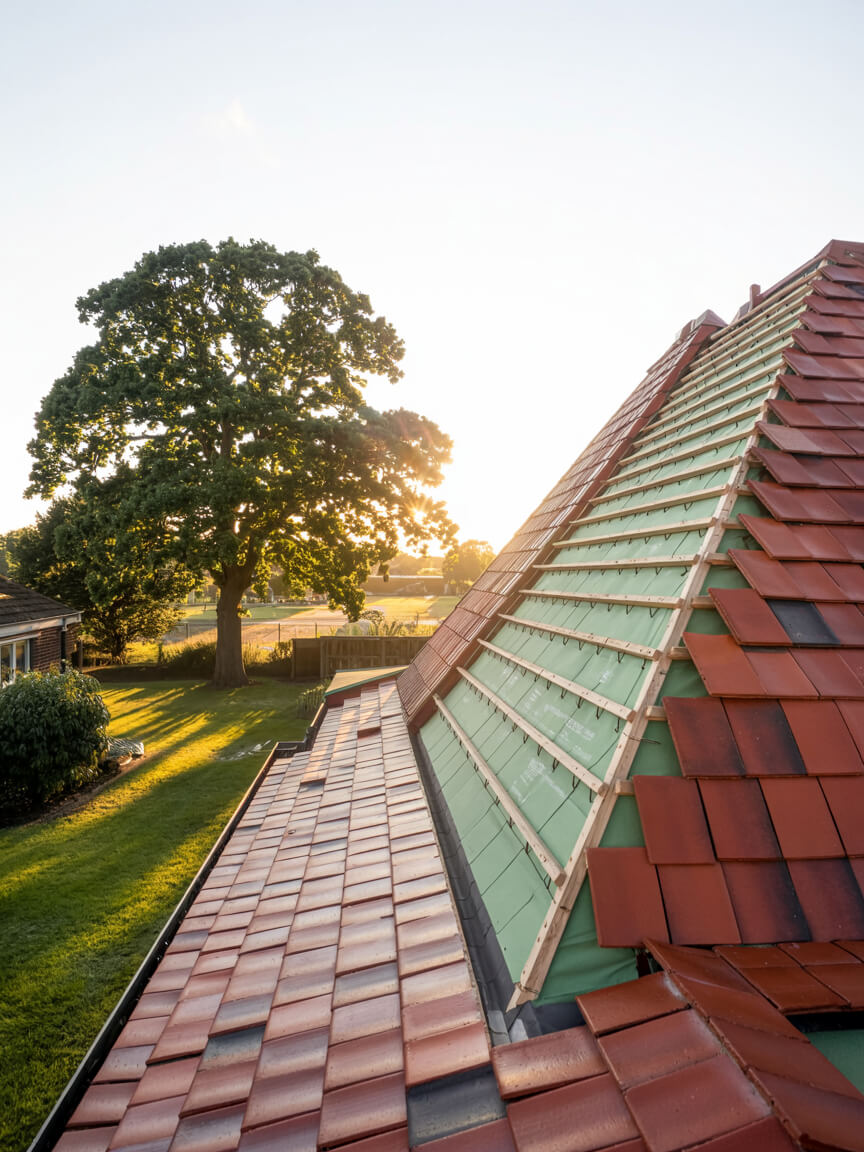
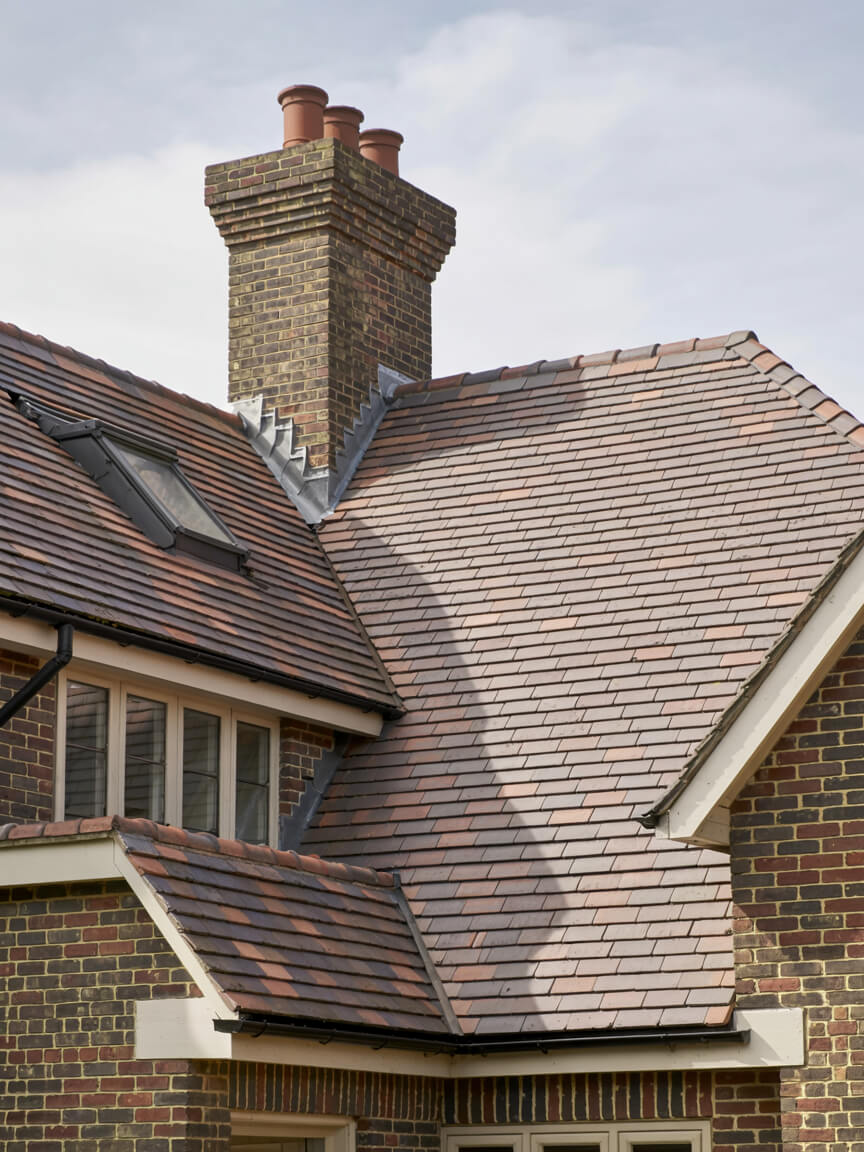
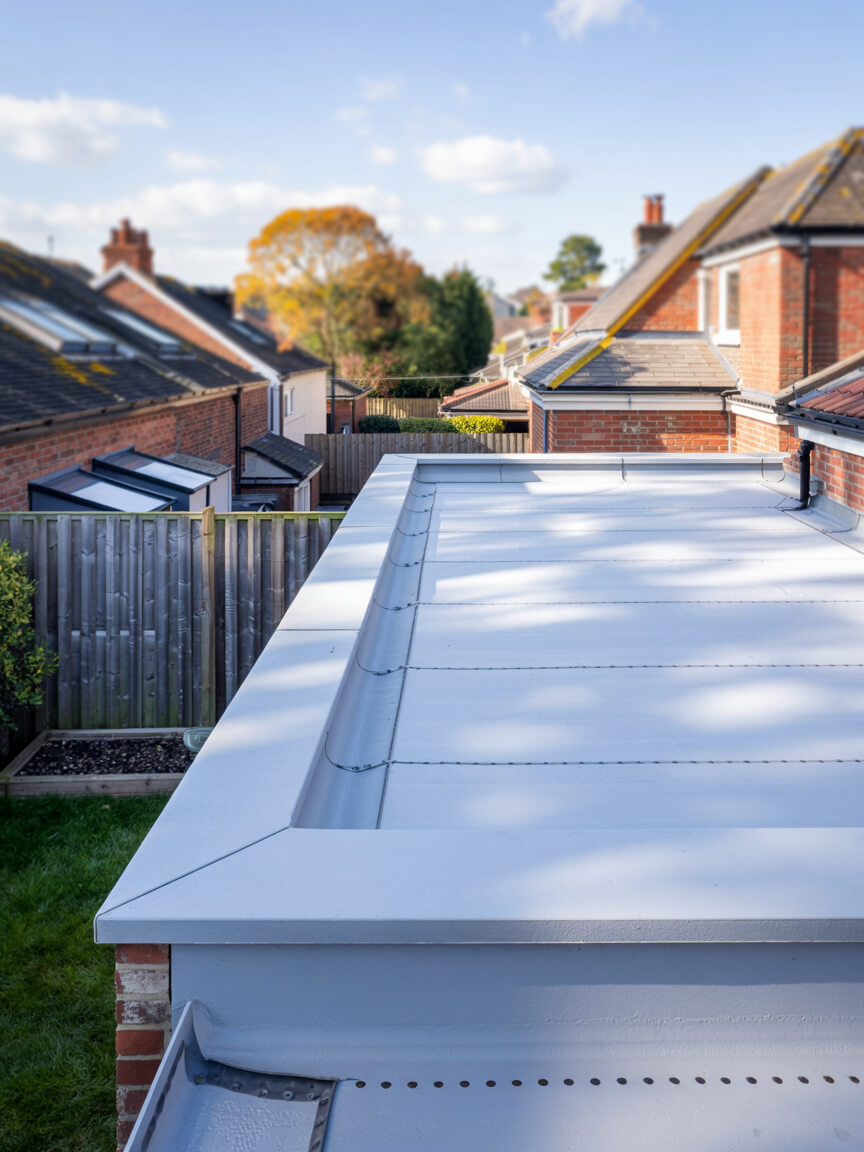
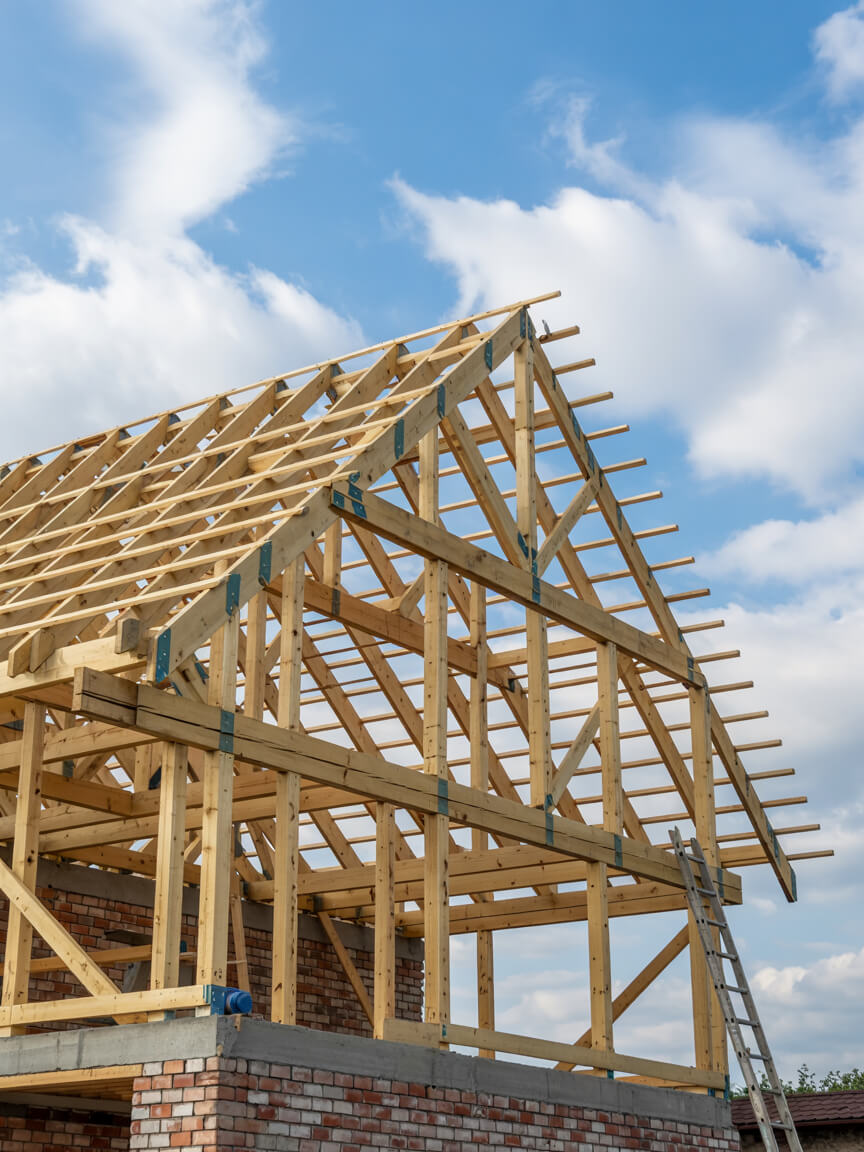
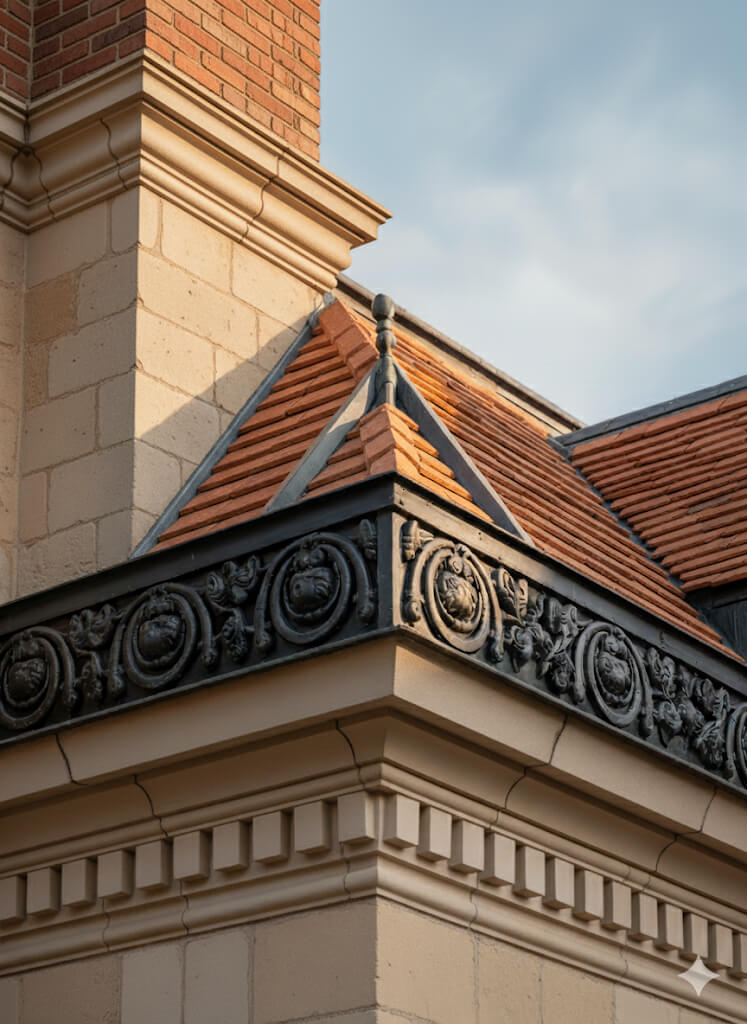
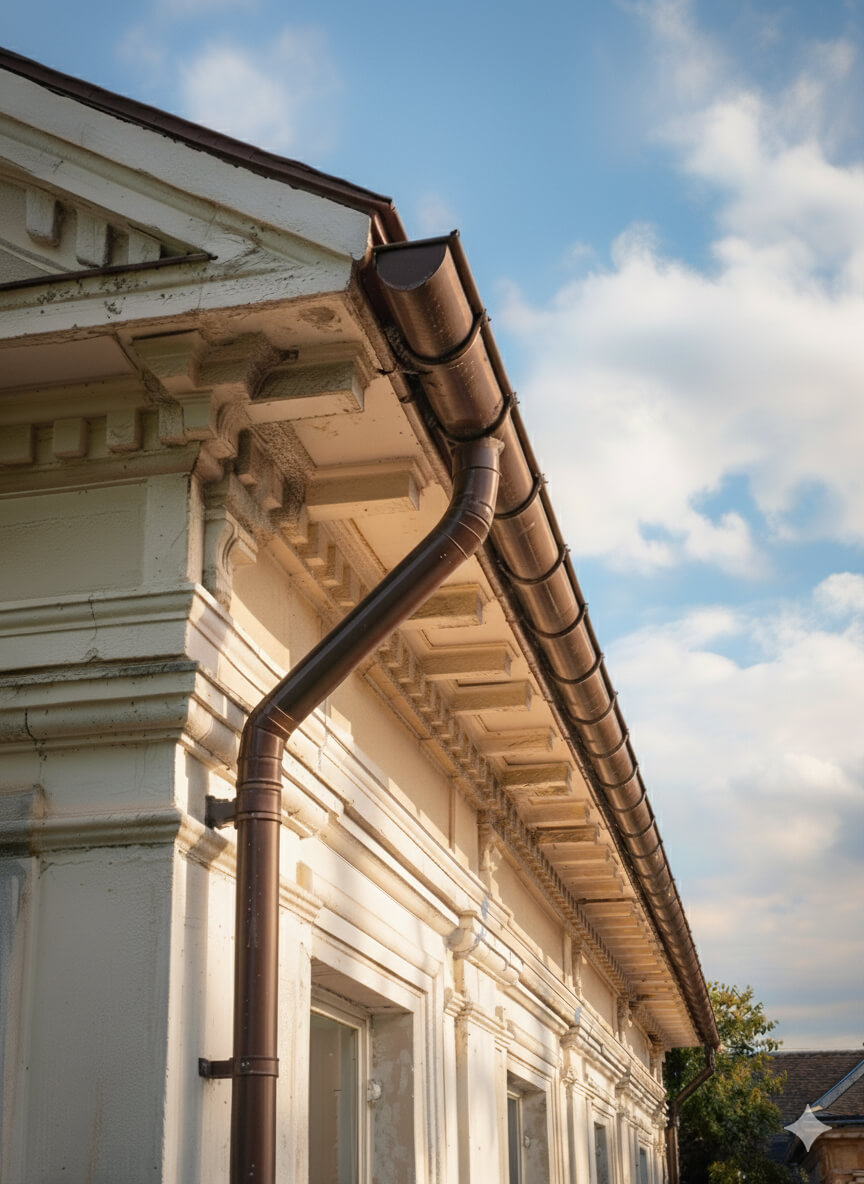

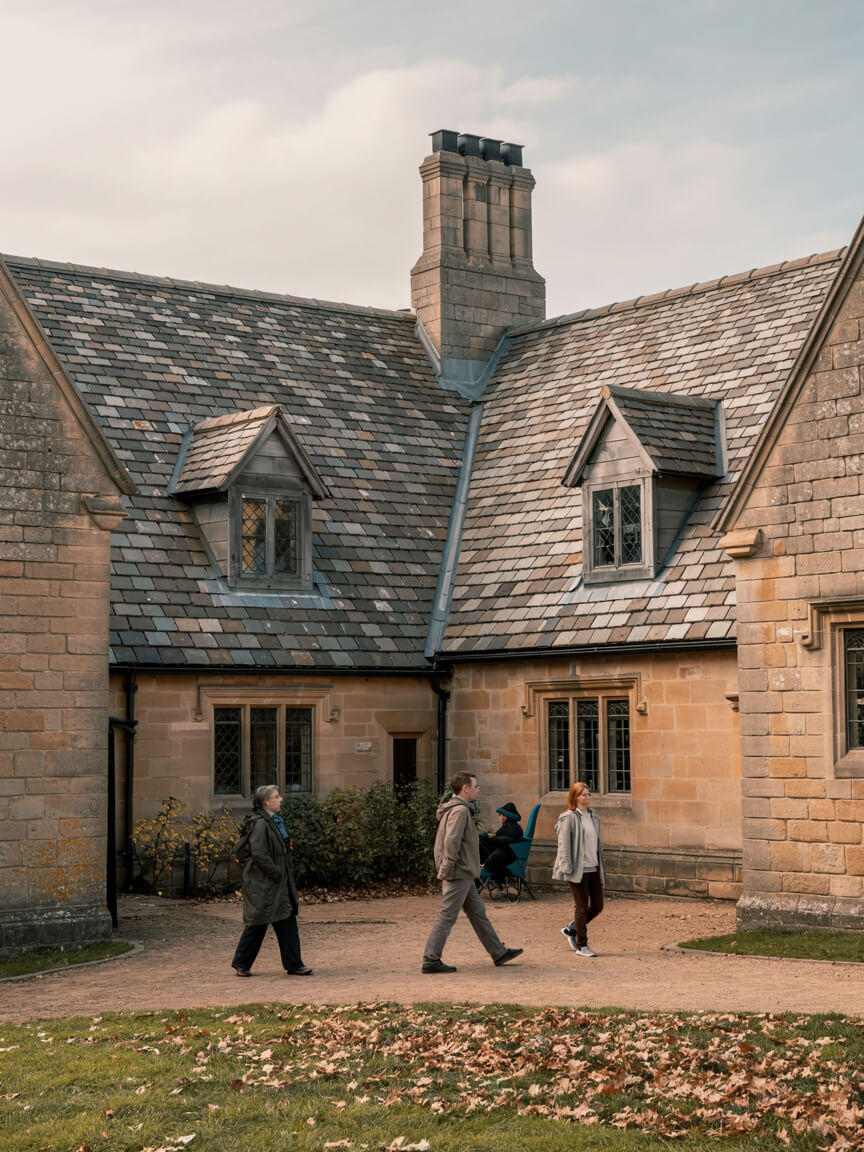
Every Roofing Services in Barking and Dagenham project is adapted to property type, roof structure, and environmental demands. Tailoring ensures compliance with regulations, minimises disruption, and maximises long-term value. From homes and businesses to industrial sites and listed heritage buildings, our flexible approach guarantees roofing solutions that meet unique needs while delivering safety, efficiency, and reliability.
Homes, extensions, and listed buildings.
Offices, retail, schools, and hospitality.
Warehouses, factories, and logistics sites.
Every Roofing Services in Barking and Dagenham project follows proven steps with quality materials. Whether a new installation, upgrade, or repair, each layer adds durability, safety, and efficiency—tailored to protect your property and meet regulatory standards.
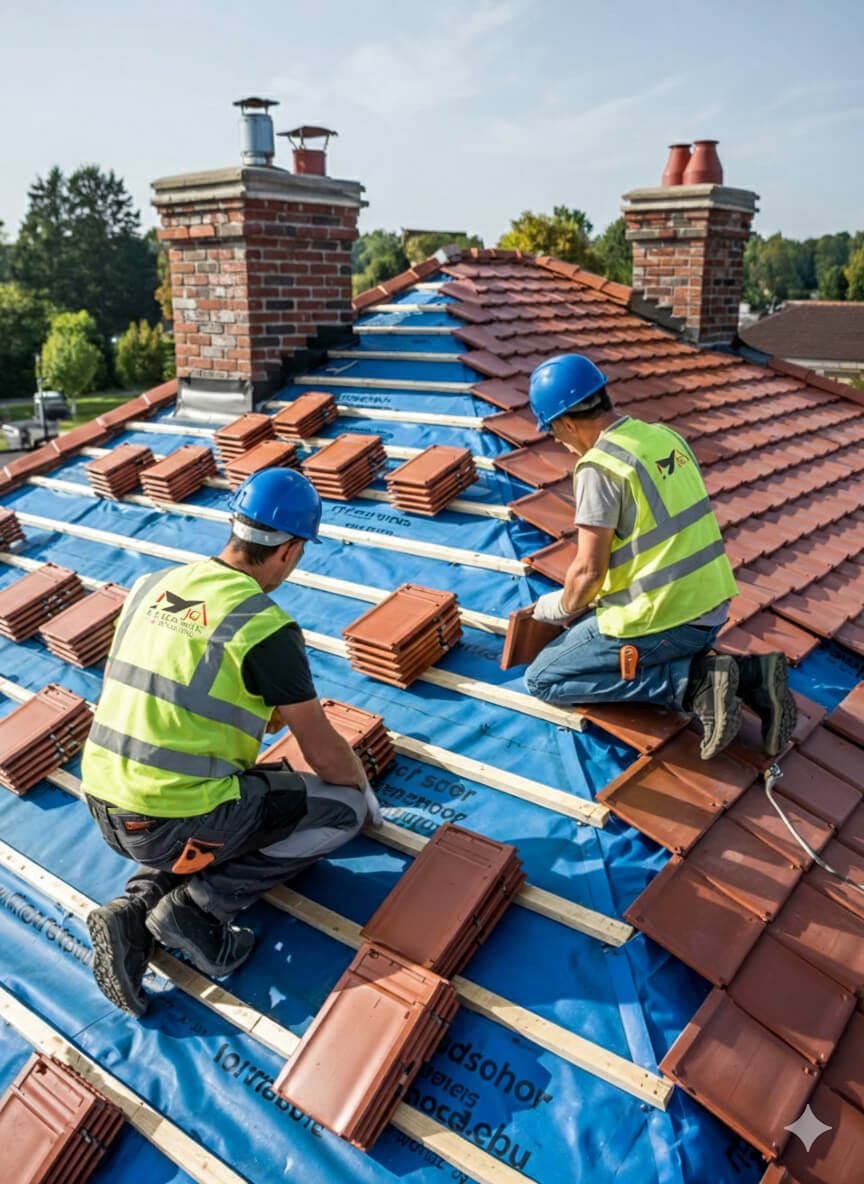
Get a free, no-obligation quote today.
Our experts are standing by to help you choose the perfect flat roofing solution.
⏱ Response within 24 hours guaranteed
Accredited by Which Trusted Trader, CITB, and approved by Kemper and Westwood, our team delivers safe, compliant, and warranty-protected Roofing Services in Barking and Dagenham projects. These credentials mean guaranteed standards and long-term assurance—reinforced by the positive client reviews that consistently highlight quality, professionalism, and trust.


Complete reroofing. Living in Singapore at the time and T was super responsive and communicative.
Replacement of lead box gutter and new flashing to parapet wall. I had an excellent experience using James and the team. He was very prompt in all aspects of communication and completed a first class job. Really pleased.
James completed some repairs on our roof and replaced some of our pebble dash by the roof as well. He was very thorough and fixed everything. He kept us really informed by taking photos and showing us what he did and keeping us updated. It also went onto our neighbours roof and he did the same fo...
We had a leak in our bedroom and James fixed the roof for us to stop it from leaking. All the work came with a warranty. The work that was carried out was good. James and his team were polite, and did all the work quickly and without too much interruption to our day-to-day lives. Would recommend ...
J G Leadworks have repaired and replaced the roofs and gulleys over our warehouse and workshops which have meant both areas are now watertight
James and team were incredibly responsive to my request to look at a serious leak issue on my flat roof. They did a very thorough investigation and explained in detail the issue and gave a fair quote. They were quick to book in and complete the work and have checked in afterwards a few times to m...
James was quick to respond to the initial contact and was able to work around some time constraints I had. He explained what needed doing clearly and was happy to answer follow up questions. He took pictures to show each stage and I feel confident in the work that was done by James and the team. ...
JG Roofing were very easy to work with. Their quote was sensible and they stuck to that figure. They completed many repairs to my roof including, rebuilding a leaded gutter, reinforcing rotten rafters, rebuilding a long felted gutter and felting parapet walls, resurfacing and felting a flat roof,...
Planning and legal checks protect clients from costly errors, delays, and non-compliance, ensuring roofing projects meet regulatory and safety requirements.
Permission is typically required for listed properties, conservation areas, or major roof alterations. All projects must also satisfy Building Regulations, including Part A (structural safety) and Part L (energy efficiency), ensuring compliant and future-proofed installations.
Our team manages the full process, from initial surveys to legal guidance, preparing documentation, and liaising with local authorities where needed. Whether working on modern homes or heritage sites, we ensure every project is delivered legally, safely, and with minimal disruption—providing complete reassurance and peace of mind to property owners.

Every project unites skilled workmanship with rigorously tested materials.
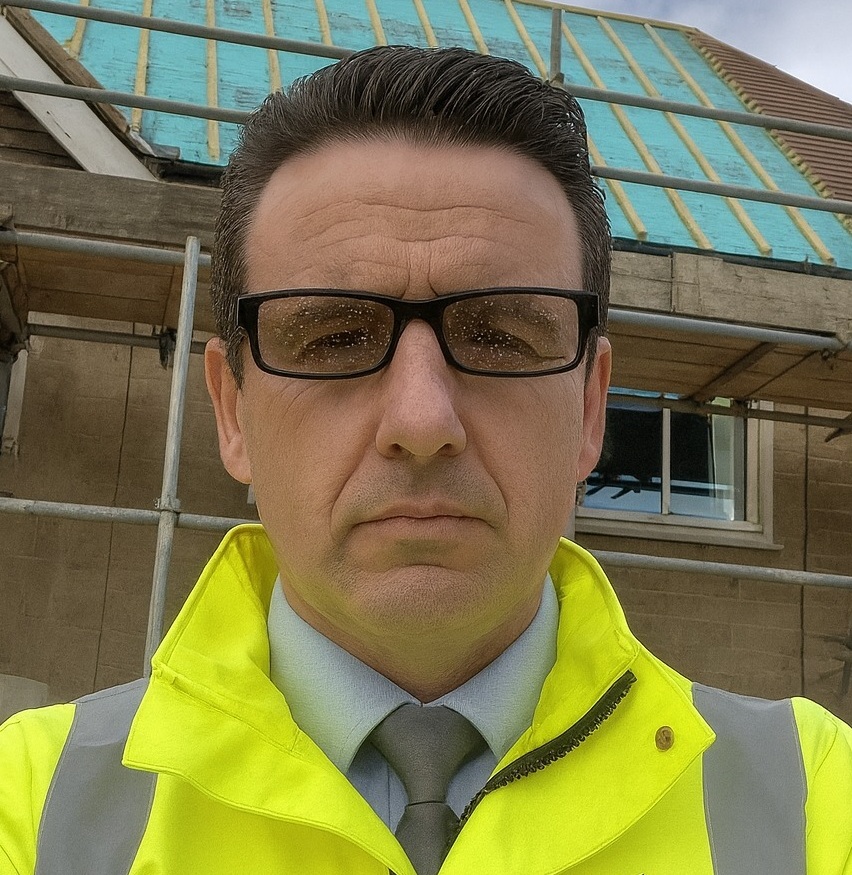
With 25 years of experience in lead sheet roofing, James is a trusted expert in heritage roofing, slate, and tiling. His knowledge of traditional methods, paired with modern compliance, makes him a go-to specialist for projects that demand both craftsmanship and durability.
Roofing Services in Barking and Dagenham provides lasting protection, efficiency, and value, delivering durable, compliant roofing solutions that safeguard every type of property investment.
Selecting Roofing Services in Barking and Dagenham involves balancing durability, budget, compliance, and aesthetics to secure the best-fit roofing solution for your property.
Why Clients Choose JG Leadwork and Roofing
With decades of trade experience, our teams understand the unique demands of London and Home Counties roofing. From heritage-listed properties to contemporary extensions, we adapt solutions to local regulations, weather conditions, and architectural styles with precision.
Accredited by Which Trusted Trader, CITB, and approved by Kemper, Westwood, IKO, ALM, and other leading suppliers.
These credentials guarantee safety, compliance, and access to manufacturer-backed warranties, giving clients peace of mind that their project meets the highest professional standards and benefits from warranty protection.
Our heritage projects use Welsh Slate and handmade clay tiles for authenticity, while leadwork is delivered to Lead Sheet Association (LSA) standards. Commercial installations employ Kemper and Westwood liquid systems for durability and efficiency. Each example demonstrates our reliability, blending traditional craftsmanship with modern performance.
Our workforce includes skilled roofers, heritage specialists, and safety-certified installers.
Every roofer holds NVQs, receives ongoing CPD training, and is qualified in both modern flat systems and traditional techniques, including slate and leadwork.
Team structure ensures projects run smoothly—surveyors identify needs, installers deliver with precision, and supervisors oversee compliance. This approach minimises disruption, accelerates timelines, and guarantees consistent quality across residential, commercial, and industrial roofing projects.
Every project is regulation-compliant, warranty-backed, and focused on long-term results.
Client testimonials and case studies confirm our track record, with projects praised for professionalism, durability, and customer support.
We go beyond installation with aftercare packages, maintenance support, and open communication at every stage. Property owners gain reassurance that JG Leadwork and Roofing stands behind its work. Book a free survey today and discover why homeowners, landlords, and businesses trust us with their roofing.

Get a free quote, rapid response, and expert service across London and the Home Counties. Contacting JG Leadwork and Roofing is your simple first step to dependable roofing solutions.
We source materials from leading suppliers including Supreme and IKO felt systems, Kemper, Westwood and Proteus liquid systems, Welsh Slate, handmade clay tiles, ALM Lead Mills, and Nicholson Air Track. These trusted brands guarantee durability, compliance, and warranty-backed performance across flat, pitched, heritage, and commercial roofing projects.
.
.
For homes, Roofing Services in Barking and Dagenham safeguards comfort and enhances kerb appeal with durable, energy-efficient systems. Whether modern extensions or traditional pitched roofs, tailored solutions improve living standards and protect property value.
For businesses, Roofing Services in Barking and Dagenham delivers cost-effective, large-scale installations with minimal disruption. Projects are planned around operations, with safety compliance, energy performance, and flexible scheduling built in—supporting offices, retail, schools, and industrial facilities with reliable, regulation-ready outcomes.
For heritage properties, Roofing Services in Barking and Dagenham combines authentic materials such as Welsh slate, handmade clay tiles, and ALM lead with skilled conservation techniques. Listed building consent and conservation requirements are fully managed, ensuring traditional character is preserved while integrating modern weatherproofing. This careful balance provides long-term durability without compromising historic integrity or aesthetic value.
JG Leadwork and Roofing delivers Roofing Services in Barking and Dagenham across housing, commercial, heritage, and public sectors. Every industry comes with unique requirements, from safety and compliance to efficiency and conservation. Our adaptability ensures projects are delivered with precision and professionalism—whether safeguarding homes, supporting business continuity, preserving history, or protecting critical public and healthcare facilities.
Durable roofing installed with minimal disruption, ensuring safe, regulation-compliant workspaces for staff and visitors.
High-standard, compliance-focused solutions protect community facilities while meeting strict safety and regulatory obligations.
Heavy-duty roofing tailored for wide spans, ventilation, and long-term maintenance efficiency.
Authentic materials and sensitive methods preserve historic character while adding modern protection.
Weatherproof systems that enhance kerb appeal and guarantee uninterrupted trading for outlets.
Tailored roofing improves guest comfort, safety, and ambience across hotels, restaurants, and venues.
Safe, durable systems designed for schools and universities with minimal learning disruption.
Specialist roofing solutions built for hygiene, safety, and regulatory compliance in medical environments.
Our team of NVQ-qualified roofers, LSTA-trained specialists, and health & safety-compliant professionals bring decades of combined experience. Every project is delivered with meticulous attention to detail, ensuring safe practices and consistent quality across flat, pitched, heritage, and commercial roofing disciplines.
Expertise includes heritage leadwork, slate and tile roofing, modern flat systems, and drone-assisted roof surveys. Ongoing CPD training ensures adaptability to both traditional craftsmanship and the latest innovations—giving clients confidence that every roof is built or repaired with proven skill and care.

A thorough survey highlights existing issues, structural considerations, and upgrade opportunities, ensuring the best-fit solution is identified from the very beginning.
Transparent, itemised quotes detail costs, timelines, and materials—giving you complete clarity and confidence before work starts, with no hidden surprises.
Scaffolding, access solutions, and robust safety measures are put in place to safeguard both property and people throughout the project.
Skilled roofers complete the work using accredited materials and proven techniques, delivering durable, compliant results while keeping disruption to a minimum—whether for repairs, replacements, or new installations.
Each stage is inspected against manufacturer standards and Building Regulations, with photographic documentation provided for transparency and peace of mind.
Each stage is inspected against manufacturer standards and Building Regulations, with photographic documentation provided for transparency and peace of mind.
In a competitive roofing market, many providers look the same on paper. JG Leadwork and Roofing stands out through proven expertise, accredited methods, and specialist techniques. Our combination of traditional craftsmanship and modern technology makes us the safer, smarter choice across residential, commercial, industrial, and heritage projects.
In a competitive roofing market, many providers look the same on paper. JG Leadwork and Roofing stands out through proven expertise, accredited methods, and specialist techniques. Our combination of traditional craftsmanship and modern technology makes us the safer, smarter choice across residential, commercial, industrial, and heritage projects.

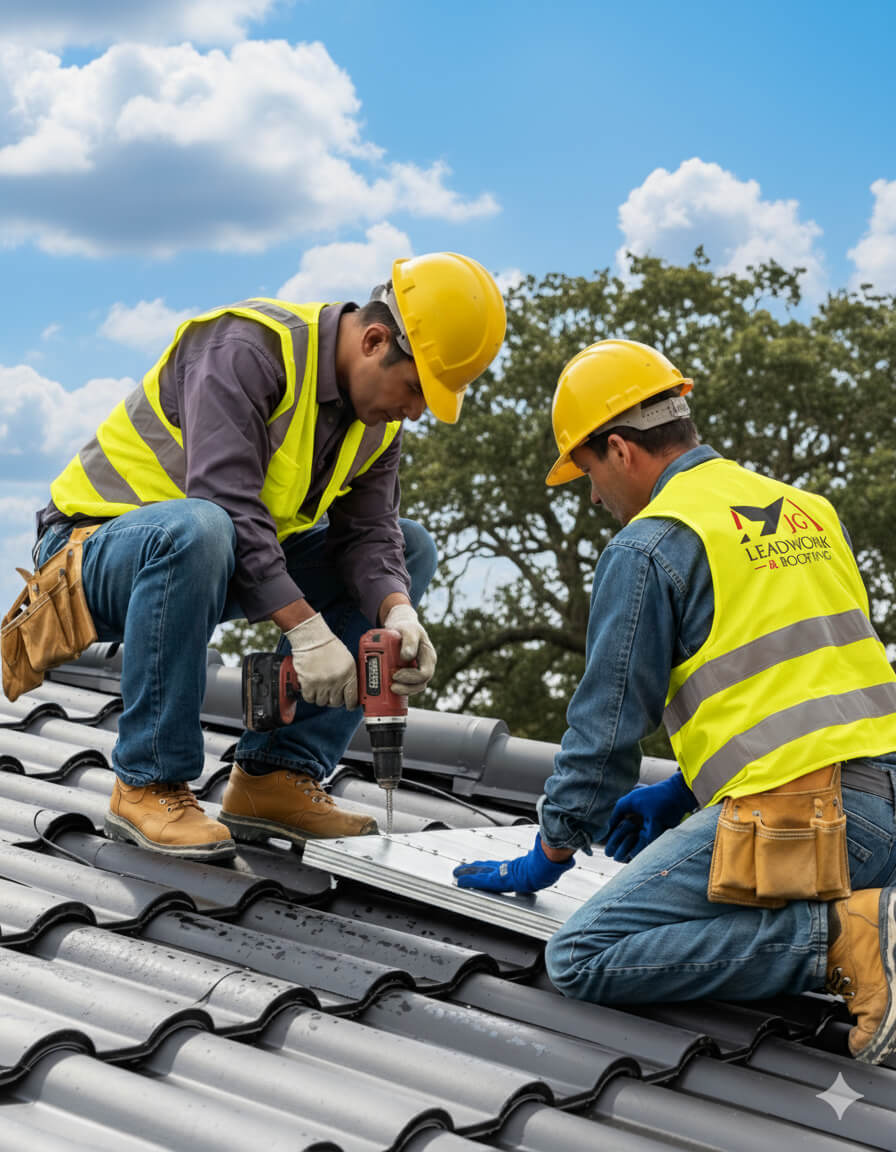
At JG Leadwork and Roofing, every project follows a structured QA process. Each stage—materials, installation, safety, and final sign-off—is measured against manufacturer specifications and UK Building Regulations to ensure durability, compliance, and warranty-backed performance across all roofing services.
Projects are only signed off once all QA checks are complete, giving clients confidence in long-term performance, structural safety, and insurance-backed peace of mind.
Every Roofing Services in Barking and Dagenham project by JG Leadwork and Roofing is delivered in strict alignment with UK Building Regulations and recognised frameworks. This ensures structural safety, energy efficiency, durability, and protects warranties and insurance coverage across residential, commercial, industrial, and heritage properties.
Clients can be confident their project is completed legally, safely, and insurance-ready—delivering long-term performance, compliance assurance, and complete peace of mind.
Property owners often wonder about Roofing Services in Barking and Dagenham—from costs and timescales to permissions. Below, you’ll find straightforward, trustworthy answers to the most frequent and practical queries.
Roof leaks after heavy rain are among the most common and disruptive issues for property owners in Barking and Dagenham. These leaks can develop suddenly, causing ceiling stains, internal damp, and even structural decay before any obvious damage is noticed. Understanding the underlying reasons matters because hidden leaks can escalate repair bills, delay insurance settlement, and present serious safety risks if left unresolved. Here, you’ll find a structured explanation of the main technical causes, practical symptoms, and how to identify the source before major damage occurs.
A primary root cause is the progressive deterioration of the main waterproofing layer—known as the roofing membrane—which shields your property from water ingress. For pitched roofs, this covers worn or cracked underfelt beneath tiles or slates; on flat roofs, it includes single-ply membranes or older bitumen systems. Years of ultraviolet (UV) exposure, temperature swings, and regular freeze–thaw cycles in the UK gradually make the membrane brittle, causing cracks or blisters.
Typical symptoms are bubbling or cracking on flat roofs, loose tiles or slates on pitched roofs, and water stains on ceilings. When these barriers fail, water can reach structural timbers and insulation. The risks if left unchecked include rapid timber decay, mould, and potentially a need for full roof replacement rather than minor repairs.
Another central cause is failure at flashing—the metal strips (often lead or zinc) sealing joints between the roof and details such as chimneys or walls. Flashings are critical for directing water away from vulnerable areas and stopping capillary tracking, where water is drawn beneath layers. Over time, repeated expansion and contraction (thermal movement), corrosion, or improper installation can open up cracks or separations in flashing.
You can often spot flashing issues by looking for damp streaks or visible gaps where the roof meets vertical surfaces, or by noticing water marks inside near chimneys. A musty smell or damp patches indoors commonly suggest failed flashings. Even sound-looking tiles or slates can conceal underlying water entry from these detail areas, risking rot and internal damage.
Some leaks are driven by external circumstances or roof design, not just component wear. Ponding water—rain that remains on flat roofs for more than 48 hours or measures over 10 mm deep—puts additional stress on membranes, especially after freeze–thaw cycles or at weak lap joints. Insufficient roof fall (lack of slope) and blocked drainage worsen this effect.
Interstitial condensation is another root cause: if insulation or vapour barriers are missing or misapplied—for instance, contrary to UK Building Regulations Part L—warm, moist indoor air can condense within roof voids. Over time, this hidden moisture mimics roof leaks, leading to timber rot or black mould. Blocked gutters and wind-blown debris may also divert water under tiles or through eaves during severe British weather.
Pinpointing the exact leak source involves both visual checks and specialised tools. For pitched roofs, visual drone or binocular surveys can reveal missing tiles, slipped slates, or displaced flashings. Indoors, damp stains on ceiling or roof timbers generally match defects above. Flat roof diagnosis may require a moisture metre to find hidden wet spots under the surface, using resistance measurements.
A borescope—a miniature camera—can explore under roof layers for trapped water. For larger problems, contractors may use core sampling to check for breakdown in membranes or insulation. Thermal imaging cameras are especially effective just after rainfall to show cold (wet) patches invisible to the eye.
Root Cause → Typical Symptom → Risk if Ignored → Indicative Action
Recognising these causes early by matching visible signs with technical knowledge allows property owners to reduce repair costs, improve insurance outcomes, and safeguard property resilience in Barking and Dagenham’s challenging weather.
Roofing costs in Barking and Dagenham—like the rest of London—depend on more than a material’s initial price. Choices between slate and tile must account for regulatory obligations, installation complexity, and long-term value. For owners and developers, these decisions impact not just budgets, but compliance, maintenance risk, and future property value. Below is a structured breakdown of the main influences, combining UK standards (such as BS 5534 and Part L regulations) with market realities.
The largest difference comes from the base material. Natural slate is generally imported and hand-graded, making it the premium option. Its cost reflects durability but also logistical and quality factors. Clay tiles can also be premium, particularly handmade or reclaimed profiles required in period homes, while concrete tiles are mass-produced and usually much more budget-friendly.
These prices are for materials only; installation costs are separate and can vary (London Roofing Material Price Survey 2024).
Slate roofs demand experienced installers. Each slate is fixed individually, often double-nailed, and installed to strict BS 5534 guidelines (the British Standard for fixing, wind resistance, and underlays). Valleys, hips, and complex shapes increase both time and skill requirements. Tile roofs—especially interlocking concrete or machine-made clay tiles—can be laid faster and with fewer breakages, but heavier tiles may require extra checks for rafter strength.
Labour typically represents 40–50% of the total cost for new roofs, with slate at a premium due to slower installation and the skill level needed. Tiles, while quicker to lay, can still add cost if the roof shape is intricate or access is limited.
All new and replacement pitched roofs in the UK must comply with BS 5534, which covers how tiles and slates are fixed, the spacing of battens, wind load tolerances, and underlay types. Part L of the Building Regulations requires adequate thermal insulation—measured in U-values (the rate heat passes through a material; a lower U-value is better for energy efficiency). In conservation or heritage areas, strict rules may specify natural slate or heritage-profile tiles to preserve historic character. Failing these requirements can result in project delays, fines, or forced remedial works.
London’s wind, rain, and urban density amplify the need for robust, standards-compliant roofs. Properties in exposed locations or larger terrace rows may face additional costs for upgrade fixings or structural reinforcement to meet BS 5534 “Zone 2 or 3” designations (higher wind zones). Conservation and heritage status can also escalate costs: local planners may insist on Welsh slate or conservation-grade clay, and require lime mortar or special fixings, affecting both budget and timelines.
| Factor | Slate (£/m²) | Clay Tile (£/m²) | Concrete Tile (£/m²) | Decision Impact |
|---|---|---|---|---|
| Material (only) | 35–60+ | 25–45 | 15–25 | Upfront material spend |
| Typical Lifespan (years) | 80–120 | 50–100 | 40–60 | Long-term value |
| Labour Complexity | High | Moderate | Lower | Drives installation cost |
| Regulatory risk (heritage) | High | Moderate | Low | Approvals/remedials |
Checklist to assess your project:
Understanding these factors ensures informed budgeting and compliance, resulting in a longer-lasting, regulation-ready roof tailored to London’s demands.
The time it takes to instal a new roof in Barking and Dagenham is determined by the property’s size, type of roofing system, complexity of the structure, and prevailing weather. Most domestic roof replacements—such as those on semi-detached or terraced homes—take between two and five working days. More complex projects, including larger properties, awkward layouts, or heritage restorations, may last a week or longer. Predicting your installation timeline is crucial for planning around access restrictions, reducing property disruption, anticipating business downtime, or arranging for other works. For landlords, facility managers, and heritage custodians, understanding timescales also helps avoid breaches of lease obligations, safety planning lapses, or delays due to listed building consents.
A typical house re-roof using tiles or slates follows a predictable schedule, sometimes as short as three days when weather and access cooperate:
For flat roofs—such as those using felt, liquid, or EPDM systems—installations on standard extensions usually take 2–3 days. Projects become longer when insulation upgrades, warm roof conversions (which add insulation above the structure), or phased work on commercial premises are involved. Weatherproofing layers often require dry spells, so damp or frosty days may slow work.
Several property and environmental variables directly affect how long your roof installation takes:
Proactive maintenance protects both your investment and building fabric, regardless of the roof type:
Timely inspections catch small issues before they escalate; a minor patch on a flat roof or isolated tile replacement costs far less than repairs after long-term leaks and water ingress.
Different materials and covering systems have varying life expectancies and upkeep requirements:
| Material | Typical Lifespan | Inspection Frequency | Maintenance Needs |
|---|---|---|---|
| **Natural Slate** | 80–100 years | Every 5 years | Minimal; replace cracked slates |
| **Clay Tile** | 60–80 years | Every 5 years | Check fixings, spot cracks |
| **Concrete Tile** | 40–60 years | Every 5 years | Remove moss, fix slipped tiles |
| **Felt Flat Roof** | 10–20 years | Every 2 years | Seal laps, patch blisters |
| **EPDM/Liquid** | 25–40 years | Every 3 years | Inspect seams, clear outlets |
Flat roofs particularly benefit from monitoring of thermal expansion joints (intentional gaps that let roof materials expand and contract with temperature changes) and regular removal of debris. Keeping on top of minor fixes helps all owners—whether of a flat, a family home, a listed landmark, or a commercial site—avoid costly water damage or insurance disputes in the years ahead.
Understanding what drives roofing costs—and how warranties and installer qualifications protect your investment—is crucial for any property owner in Barking and Dagenham. The price you pay is more than just labour and materials; it’s an assurance that your roof is structurally sound, meets regulations, and won’t present unwelcome surprises. Homeowners and landlords want to plan with clarity; commercial managers require transparent costs and warranty-backed security, since even minor shortcuts can cause severe expense down the road.
Roofing costs can vary dramatically, and the right estimate accounts for more than just surface size. Here’s how the main service types compare:
| Service Type | Typical Range (UK) | Key Influences |
|---|---|---|
| Roof Repair | £250 – £1,200 | Damage type, access, materials |
| Roof Replacement | £5,000 – £15,000+ | Size, structure, insulation, finish |
Roof repair usually involves replacing tiles or fixing leaks, with costs driven by the damage’s extent, roof complexity, and ease of access. Roof replacement is a bigger investment, influenced by roof area, structural repairs, insulation upgrades, and finish materials. Modern regulations increasingly require better insulation (meeting Part L energy standards), which adds upfront cost but pays off in energy savings. Factors such as waste disposal, scaffolding, and custom leadwork may also shift the budget.
A strong insurance-backed warranty is a key component of roofing value. Most reputable contractors offer warranties of 10 to 20 years, covering either the materials (such as tiles, membranes, or lead) or the workmanship (labour and assembly method). Some warranties even transfer to the next owner, which supports property resale.
This dual protection matters for Part L compliance—the energy performance standard required when roofs are replaced or substantially altered in England. Warranties show inspectors, insurers, and future buyers that the work meets regulations, which expedites insurance claims and sales transactions.
The expertise and credentials of your roofer can make or break the entire project. An accredited installer brings recognised qualifications such as NVQ Level 2 or higher, CITB training, and may be listed with schemes like TrustMark or Which Trusted Trader. These signals indicate:
Accreditation also signals ongoing competence checks, discipline in following programme updates, and eligibility for insurance-backed warranties unavailable to unqualified installers.
Trying to save upfront with unqualified labour or quick fixes can backfire quickly. Shortcuts such as skimping on underlay, installing new shingles over rotten timber, neglecting insulation, or ignoring roof ventilation often lead to:
Typically, any “saving” is rapidly erased by avoidable repairs or lost insurance cover—while the stress and financial risk land squarely with the property owner. In roofing, investing in trusted expertise and specifying a clear, written warranty delivers long-term assurance and peace of mind.